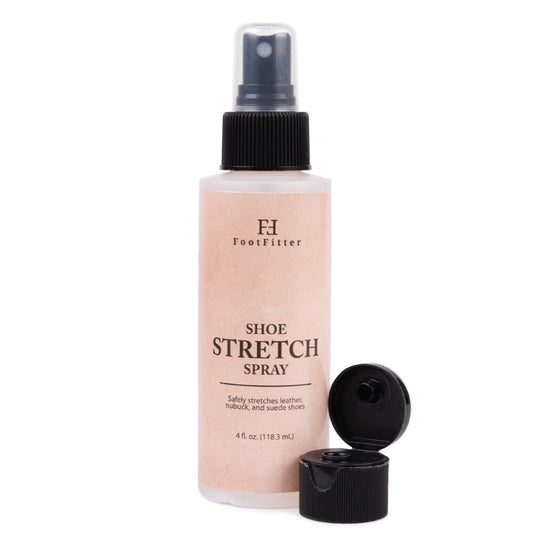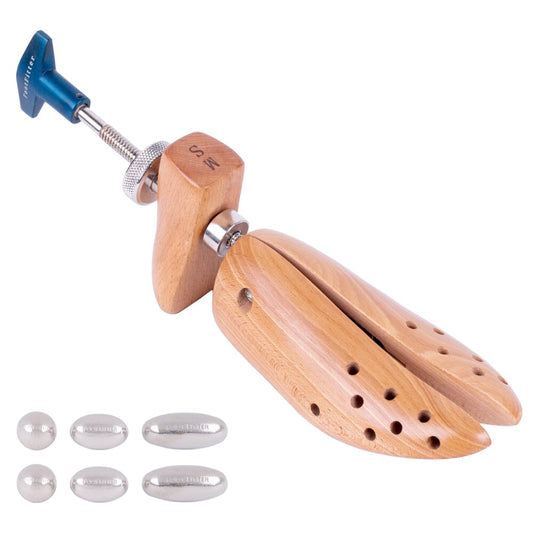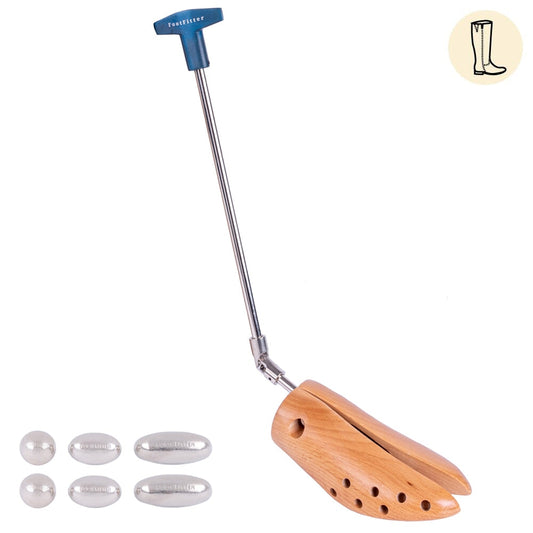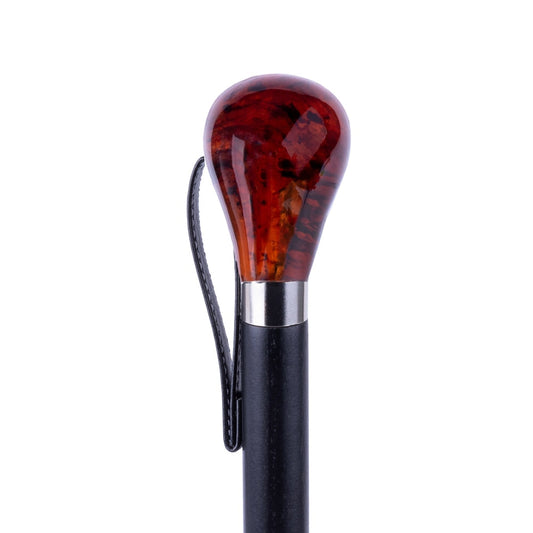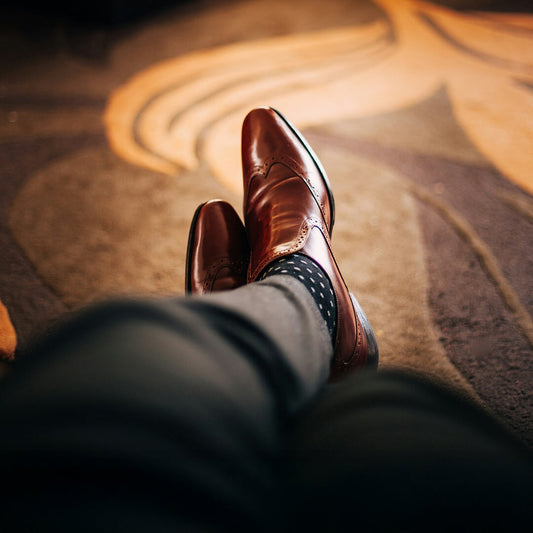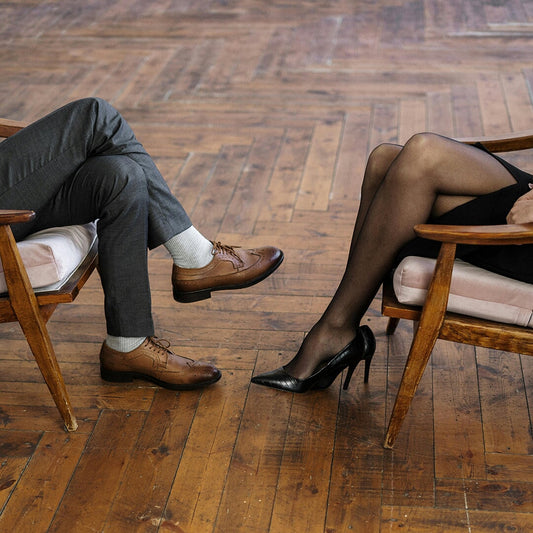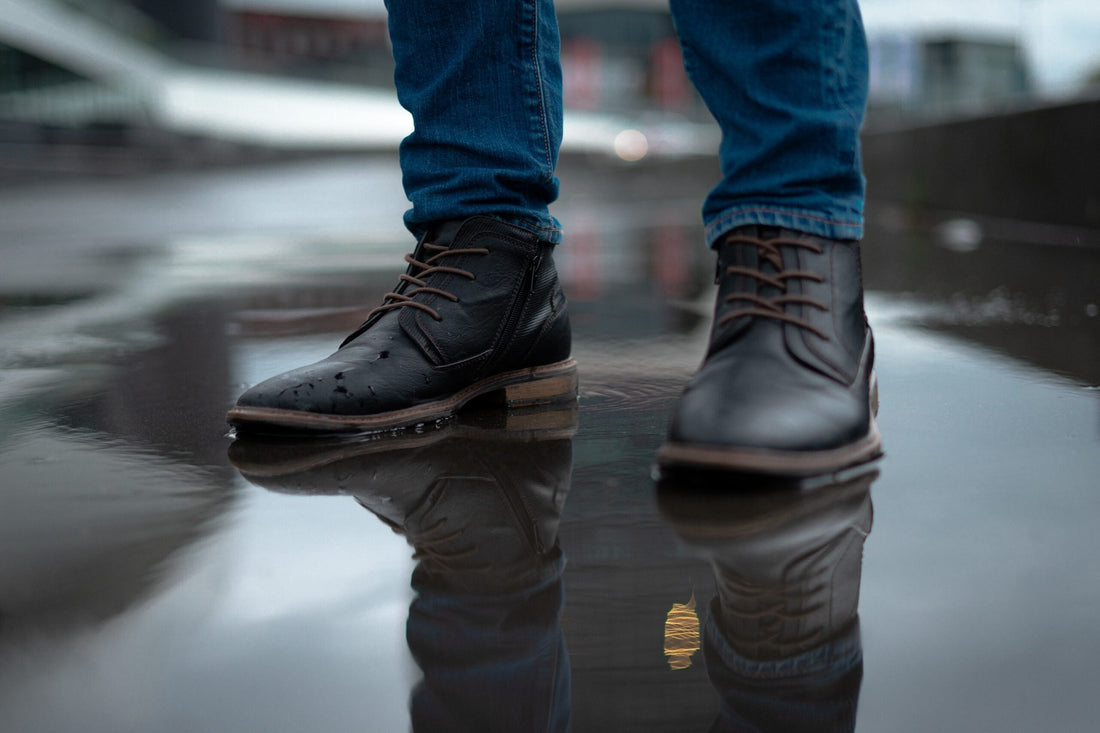
How to Add Traction to Slippery Leather Soles
Share
Your leather dress shoes or high heels are the only thing protecting your feet from the outside world, so don’t let a slippery sole lead you to an injury.
There are different ways to make leather-bottomed footwear less slippery, so in this post we’ll be talking about different methods and how they differ from one another.
This blog will mainly focus on footwear with smooth leather soles, but some of these methods can work for rubber-soled shoes.
Why Should I Buy Leather-Soled Shoes to Begin With?
So let’s start off by explaining why it’s worth owning an excellent pair of leather-bottomed shoes.
If we’re going off looks alone, well-made dress shoes or high heels just look absolutely elegant. That smooth, natural leather just oozes class, craftsmanship and sophistication.
Thick rubber soles, though very durable and have loads of traction, can sometimes break what would otherwise be a great-looking shoe.
Leather soles are also sustainable in the sense that the material, if properly maintained, can last a long time. Additionally, a cobbler can resole a shoe with a fresh leather bottom.
There’s also the breathability factor as well. Because the sole is made from cowhide, the material allows your feet to breathe more easily than it could in a shoe with a rubber sole.
So How Do You Add Traction to Leather Soles?
Wear Your Shoes

Our preferred method of adding traction to leather soles is to simply wear the shoes and break them in.
The more scuffed the leather soles get, the less slippery they will become. It’s as simple as that.
Try walking around on rough surfaces — such as concrete sidewalks and metal grates — to wear down the soles on your shoes.
This method will also allow the leather soles to mold to your feet, thus making your footwear more comfortable as you wear them over time.
Use an Abrasive Pad, Like Sandpaper
If you’re trying to expedite the break-in process, you can use sandpaper (like an 80-grit paper) to manually scuff the soles before wearing the shoes.
Take your sandpaper and rub the area of the leather soles where the bottoms will make most contact with the ground. Get it to the point where the smooth sections have texture.
Be careful not to be too aggressive with the soles, as you could sand through the material and cause flat spots.
You can also use a nail file or an emery board on your leather soles if you’re in a pinch.
Add Grip Pads / Shoe Grips / Heel Caps
Installing grip pads or shoe grips — any self-adhering rubber pad — is a fast way to give your shoes traction without having to go through the process of breaking in the soles.
These products are relatively cheap to purchase and usually come in a multipack for when you need to replace a pad.
We’d much rather see a worn leather sole than one with a rubber pad on it, but if your shoes need that extra grip, these adhesives will do a good job.
For high heel wearers, try adding heel caps to your spiky stilettos or pumps in addition to adding a grip pad to the outsole. Heel caps add traction as well as softens each step and reduces clicking noise.
Use a Spray-On Adhesive
Sometimes a perfectly worn-in leather sole needs extra traction, especially if you have to walk through wet or icy conditions.
A good spray-on adhesive, like this one from Bare Ground Solutions, will give you that much-needed grip without damaging your shoes. Just spray a layer of the adhesive onto the soles and let it dry before wearing.
Make sure you use a product that will not harm the leather soles.
You can technically also use hairspray, but we don’t recommend it as some hairsprays can damage leather.
Go to a Cobbler and Replace the Soles
There will be a point when the outsoles of your leather shoes or heels need to be replaced.
If you spent a decent amount of money on your footwear, and if the upper is still in great condition, it only makes sense to go to a cobbler or a good shoe repair shop and replace the soles.
Depending on where you go and the style of your shoes or heels, you can have the soles replaced with a single or double layer of leather, switch over to a rubber sole or a hybrid of the two.
The outsoles should be replaced if they have a hole in them or if the soles feel spongy and soft.
Main Image Source: Lukas Kaufmann, via Unsplash


